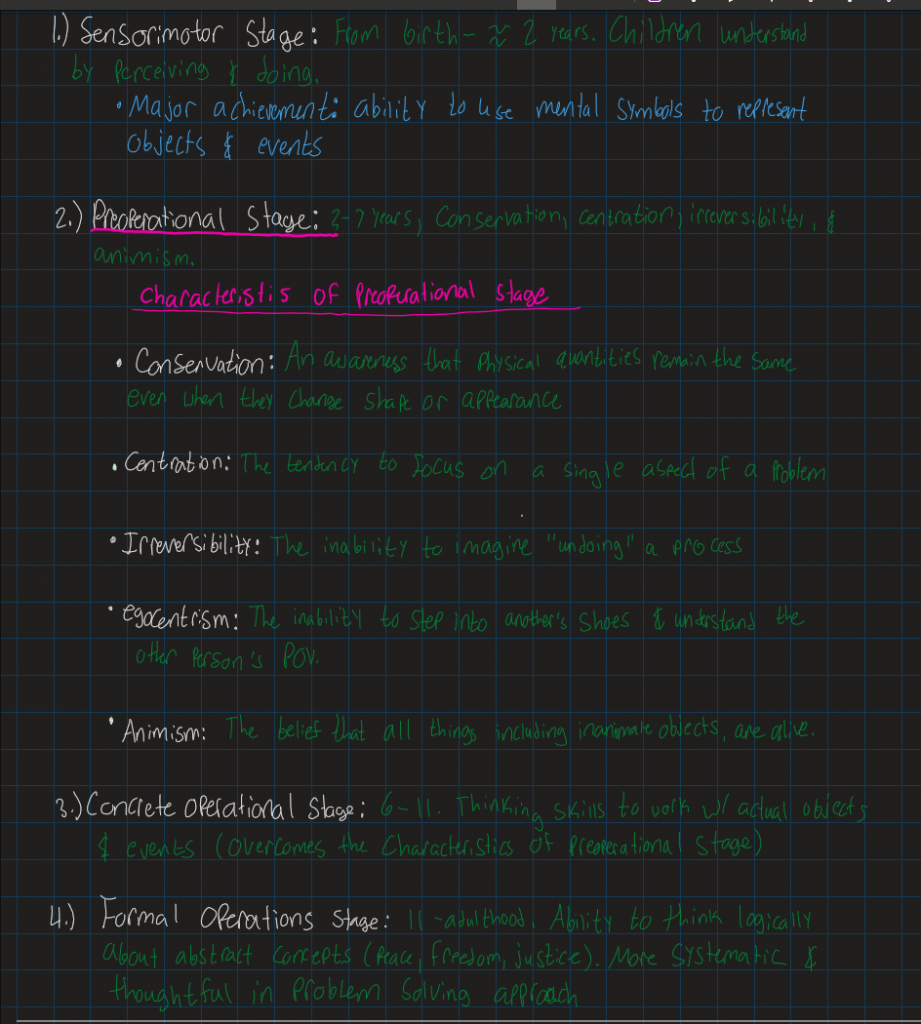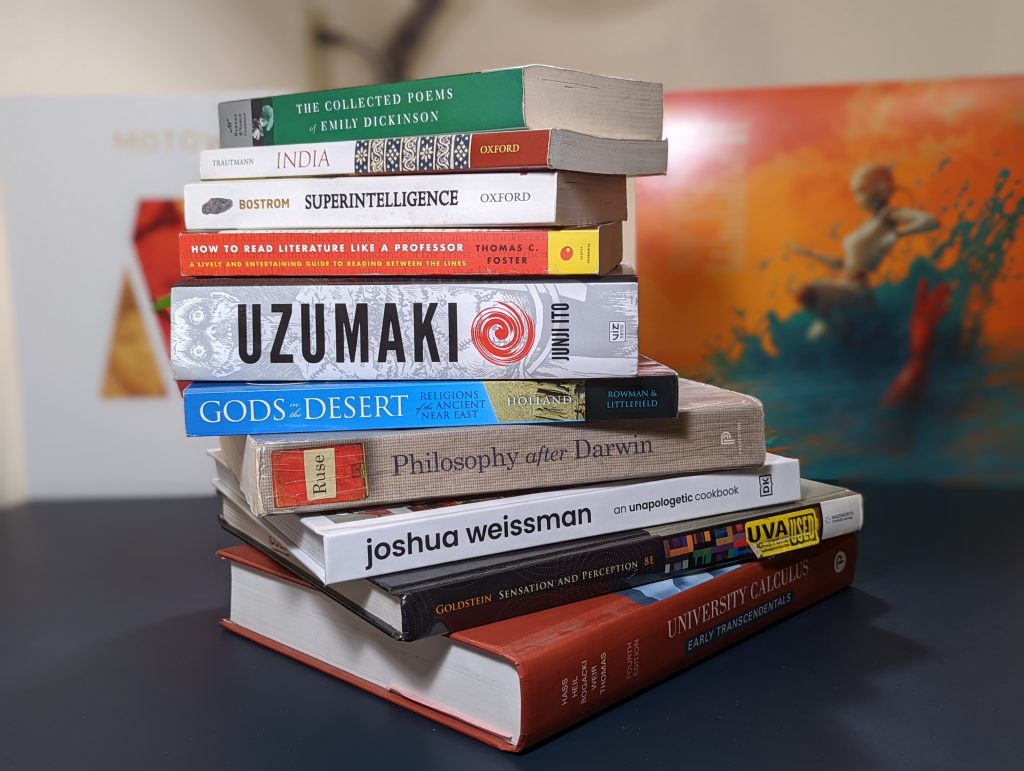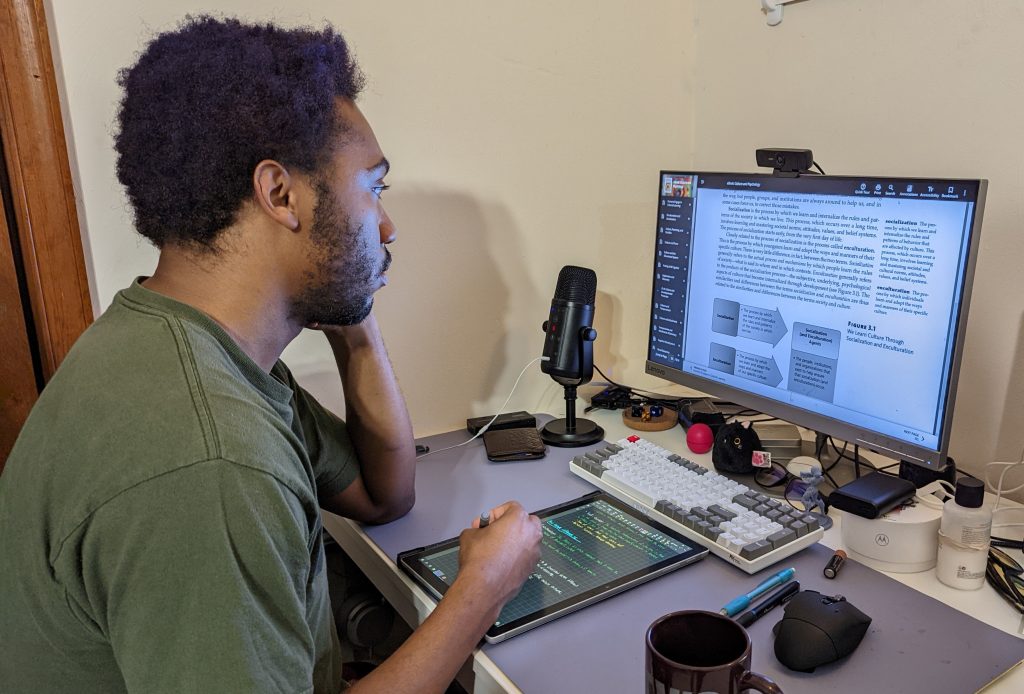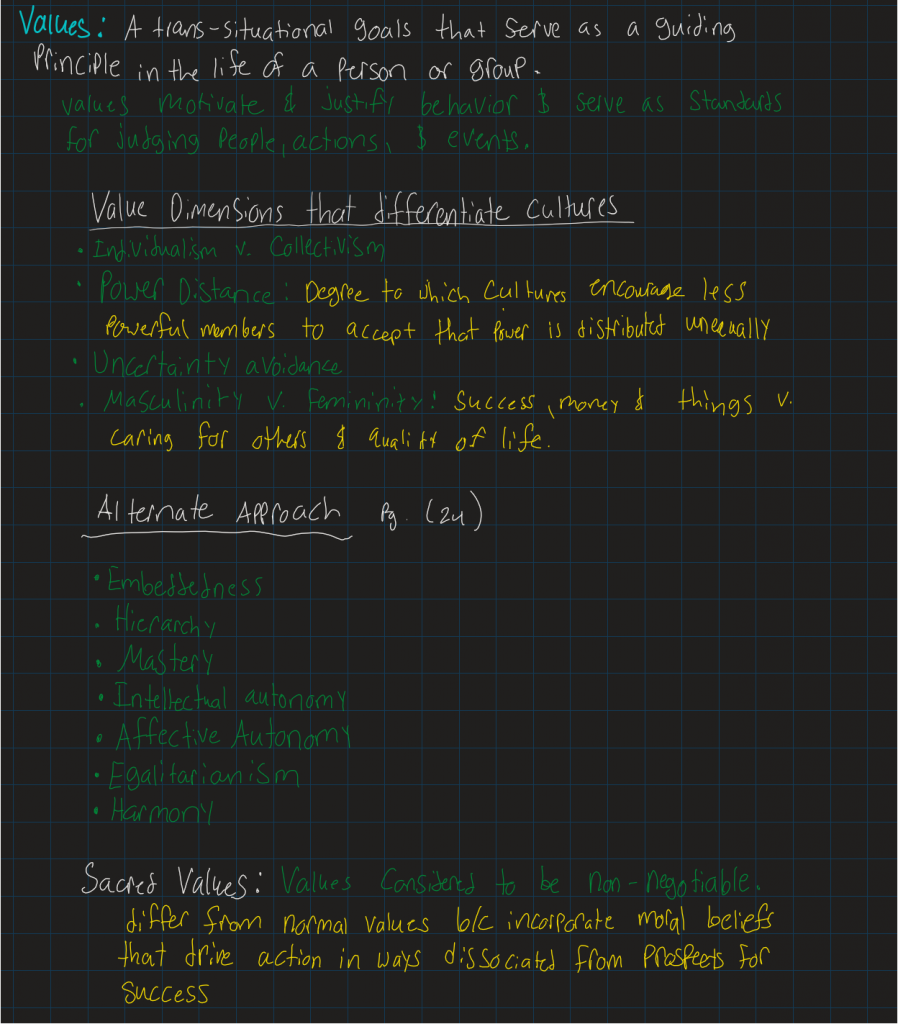Blog 10

Overall I feel I’ve attained the course objectives pretty well and as a result, met my expectations. As a result of this course when exposed to other psychological theories in my other courses I was forced to ask and consider if the study had a culturally diverse group in the experimental parameters or if subsequent experiments evaluated the findings in an alternate context. It has also introduced an alternate form of thinking about mental illnesses and what behavior and thought patterns may or may not be considered normal depending on which culture a person has grown up in. This alteration in thought processes goes hand in hand with the academic development that I’ve experienced since the beginning of the semester as well. Prior to the start of the course, I knew that the environment in which a person grows up could significantly alter their psychology, however when interpreting the results of different studies it had not occurred to me that the culture in which the study took place in could significantly alter the results that might be obtained. This ability to evaluate psychological research for potential cultural influences could offer potential alterations to a study that would constitute a thesis or research outcome of my own someday. If I were to take the course again I would allocate more time to its work or completed more work ahead of time as I ended up missing assignments as a result. I think that after looking back at my first assignment activity I recognize how much I had to learn about cultural differences. There is still a lot I don’t understand, but I now recognize how little one can assume to be consistent across vastly different cultures. Something that particularly stands out in my memory is when I found out that interpretation of facial expressions can be interpreted differently, and not only that but some expressions acceptable in one culture are frowned upon in another.
I chose the image above because it illustrates both how I was at the beginning of the course and how I am now. At the beginning of the course, I feel like my natural response could have been any of the thought bubbles presented in the image. However, now I feel like I would be more likely to recognize the “thought bubble” of the person I’d be interacting with and could behave accordingly; or at the very least know what minimum amount of information I’d need to gather. This photo also relates to my blog post in that the interactions between the people in the picture are representative of the ignorance of other cultural practices and interactions I had prior to participating in the course.
Blog 8

I’m unsure if many of the differences I’ve noticed over the years were due to cultural differences or general differences in parenting styles but something I’ve often noticed is the extent to which many Americans display their emotions and or affections in Public. I myself am a US native and have lived here my whole life, however, throughout my childhood, my mother and myself have been considered to be difficult to read and somewhat intimidating.
I noticed many people who wore their hearts on their sleeves and seemed to make comparatively large facial expressions. For many years their behavior baffled and frustrated me because their emotional expression often interrupted the flow of the interaction and it seemed rude for them to do so. My most prominent role model was my mother and even at home she was very measured with her words and in control of what emotions she displayed. If my brother got in trouble at school or elsewhere she didn’t yell or look particularly angry, but would calmly vocalize her emotions and explain what punishment he would receive. I’m not entirely sure why my mother would have such different cultural display rules as she grew up in the US as well however it could be due to her upbringing in dangerous areas in which differences in emotional displays can greatly alter the outcome of a situation.
The image above is an image representing emotional interpretations by Western Caucasians (WC) and East Asians (EA) of the 6 basic facial expressions of emotion. The image is particularly interesting when the mouths and eyes have individually covered the variation between mouth shapes of different emotions is far more distinct in the WC images than in the EA images which is consistent with the cultural display rules of the respective cultures.
Blog 7

To some extent, I think that fairy tales that are passed down represent a shared set of cultural norms and values. Storytelling passed from generation to generation is often how a shared set of ideals are spread and continued as seen with religious texts. It is important to note however that fairy tales might change over time as well as the audiences and intended messages as illustrated in the alterations that occurred for the most recent adaptation of Beauty and the Beast. The egalitarian message that is purported in the 2017 version of Beauty and the Beast, as well as many creative works since has the potential impact of increasing the acceptance of other individuals unlike themselves as well as making members of those groups more accepted to others. It is a well-established cognitive phenomenon that people tend to be more comfortable with that which they are more familiar; by exposing young audiences to media representing people from different walks of life they are more likely to feel more comfortable around and accepting of members of that group. Additionally, by creating, updated versions of previously popular fairy tales, the updated ideology is present in content that they might pass down to the next generation.
A movie that positively influenced me and whose protagonist I felt a connection with was The Secret Life of Walter Mitty. For most of my life until 2013 and 2014, I didn’t really take many risks or really do things that I wanted to do. My actions were always stuck focusing on the things I thought I “should” do. Walter was fairly similar until he receives a call to action of sorts that he chooses to accept and goes on an experience of a lifetime. I can’t say it was specifically that movie that inspired me for certain but after that year I began to take more risks and not let fear, control all of my decisions. It wasn’t a snap thing that lead me to live a life of adventure or anything so grandiose, but it was a first step that’s led me to have many experiences that I was able to sometimes love, hate, get sick over, and many other things good or bad; but whether I enjoyed the experience or not, I gained some knowledge and a good story and that’s made them all well worth it.
The above image was chosen as it illustrates a wide variety of skin colors, accessories, and styles from various cultural groups. Advertising and media that contain imagery such as these increase the comfort for members of an outgroup by helping make them more familiar. We can’t include, what we do not trust, and it’s difficult trust what we doo not know.
Blog 5

- I am adaptable.
- I am intelligent.
- I am patient.
- I am level-headed.
- I am confident.
- I am competitive.
- I am collaborative.
- I am brave.
- I am understanding.
- I am resilient.
Overall it’s clear that all of my statements aside from possibly 7 and 9 are associated with the dimension of independent self construal as each are focusing on individual attributes of mine that don’t strongly relate to relationships with other people. While I do not view myself as particularly unique, I do have pride and confidence in my skill set though do my best not to assert them in public unless it’s useful.
Statement 7 seems closely associated with an interdependent construal of self however even my wording of “I am collaborative” as opposed to “I am a collaborator” is somewhat indicative of a leaning toward independent construal of self. Statement 9 is relatively related to an interdependent construal of self as it’s more related to how I interact with others, however similarly, to statement 7 the wording is more akin to an ascription of a particular attribute and less so a relationship. It seems obvious based on the aforementioned statements that I for the most part view myself as firmly independent.
Interdependent Phrases:
“Stay in your lane”
“What would Jesus do?
“It’s in God’s hands now”
Independent Phrases:
“Pull yourself up by your bootstraps”
“Everyone grows at a different pace”
“Shine bright like a Diamond”
It was actually about equally difficult for me to think of proverbs and phrase, it’s possible that it’s a result of growing up in a very religious household as well as studying various Buddhist texts emphasizing interdependence while also having great confidence in my own ability to attain what I wish for through a combination of preparation and luck. I also try to regularly remind myself that while I’m skilled in certain areas, I’m not “more special” than anyone else, I just was lucky with my genetics and worked hard at the rest.
The image above was selected as it represents an important tenet of mine that goes hand in hand with statement 10. I like this quote in particular as the “never give in, never, never, never.” is frequently quoted but leaves out the following sentence. I firmly believe there are time in which giving up is the most sensible thing to do, however only under certain circumstances.
Blog 4

In general I felt pretty good about my exam score, there were a few problems that I missed however upon reviewing those questions and my notes I saw that the specific questions I missed corresponded with the regions of my notes that were less detailed than the other regions. Upon review I recalled that when reading certain sections I didn’t think they would be as important and didn’t note them accordingly. Despite these minor areas, my grade does reflect the effort I put in prior to the exam. I reviewed the information over time and took notes on the chapters as I read them.
The image is representative of my note taking throughout my readings of the chapters and the organization structure of my notes throughout the chapters.
Blog 3

All in all I’m not particularly surprised at the outcome of my results on the test. I’ve taken other OCEAN based personality tests in the past and my results were largely similar to the results I received today. The results were consistent with very high Openness, very high Conscientiousness, average Extroversion, very high Agreeableness, and low Neuroticism. A personality trait that I am most proud of is my ability to adapt. High adaptability is essentially impossible without an openness to new ideas and ability to accommodate. People of dissenting opinions or those who are simply very shy may be reluctant to voice their ideas if they feel they’re dealing with someone who will completely disregard their feelings. A certain level of agreeableness is also necessary to interact well with people and allow them to open up about their ideas. An important caveat however, I am only very agreeable if I agree with the person I’m interacting with, otherwise I will politely let my position known and wish to have a discussion explaining our points of view. It matters little to me whether or not we agree, only that we understand each others’ perspectives.
In terms of Neuroticism, I feel my score is so low is because I am confident in my abilities. In general I was raised and experience has taught me that given enough time and preparation I am capable of achieving my goals. Additionally if I’ve prepared well it does not seem particularly useful to stress about the outcome of a behavior and simply focus on the things I can control.
The image above is a few of the books and a couple records from my collection. Music is almost always on in the background of my life. I’ve always been in love with diverse stylings of music and it has also functioned as a useful mechanism to connect with other people that might be very different from myself. The image felt appropriate as it mirrors the presence of important things in my life. It illustrates my wide interests and openness to assimilate new information. As mentioned before I find the ability to adapt to be very important, and the best mechanism I’ve found to be prepared is to have knowledge that one can connect to the situation. What better way is there to learn information about diverse topics than reading?
Blog 2

I enjoy learning knew things and being intellectually stimulated. In high school I took every advanced course my school offered that did not require an extra fee. I generally have a policy of looking into information I believe or disbelieve in prior to discussing the topics with others, even going so far as to read the scientific studies which articles are based on in order to mitigate bias. My father was and still is an educator and my mother began working on her Masters degree while I was in high school, I grew up surrounded by curious people. It’s also important to note that because of my minority status and performance in school I was told by many teachers over the years that because of these things I needed to do well as a representative for the rest of my race. There is much that could be unpacked in that statement but it does indicate a significant pressure source towards attending higher education; fortunately for me I also found education enjoyable.
The picture above is of me reading through a chapter of this textbook and taking notes. The image is a good fit for this post in that it’s representative of the work ethic and curiosity that led me to pursuing higher education. In high school I would regularly be up until well after midnight working on schoolwork to ensure success and maximum university opportunities. In terms of education, if I didn’t do as well as I would have liked on an assessment than I simply feel that I did not prepare enough.
Blog 1
The course objectives in a sense are to incorporate a diversity of thinking into our thought processes when interpreting the world. It’s largely an accepted fact in psychology these days that who we are is not a matter of nature vs nurture but is, in fact, a combination of the two. Culture is a major source of nurture in the development of not only individuals but societies as a whole. Understanding how cultural diversity affects our interpretations not only of people but data as well can lead us to prevent misunderstandings that compound on top of previous biases. A key tool for any person who desires to conduct research or increase creativity of any kind is the ability to make connections and integrate learning, especially to seemingly unrelated topics. When unaware of our own potential cultural biases it’s possible to overlook connections and arrive at conclusions in line that place our cultural interpretation in a positive light and an alternate culture as the one that is flawed.
My expectations for this course are that it will expand my ability to think in diverse contexts and improve my ability to adapt in unfamiliar situations. I currently feel pretty positive about my abilities in these categories however, I don’t know what I don’t know about significant differences between my understanding of the world as compared to individuals from other cultures. To ensure these goals are achieved I plan to do the readings promptly as well as take notes on each chapter, rereading sections on any topics that challenge me until I am confident in my understanding of them.

The above image is a section of my notes summarizing important details of values. I chose this image not only because it is a representation of the effort I put forth in taking in the material to ensure success but also as a symbol of a personal value of my own. As someone who desires to conduct research of their own in the future, I am a firm believer in the sharing of information. I attempt to keep notes as simple and organized as possible to facilitate information exchange late. While the information presented in the image is already known and accessible to my peers, perhaps the note structure I utilize will prove useful if not the information itself.
A value that I hold dear is that people should be open to understanding ideas that differ from their own, even if they disagree with them. A key aspect that makes this type of thinking possible is that I live in a culture in which most people are free to express controversial ideas without fear of severe physical or social harm. I decided to continue into higher education for multiple reasons. I can’t deny that there was a certain expectation from my parents to attend college; however, the major reason why was insatiable curiosity.